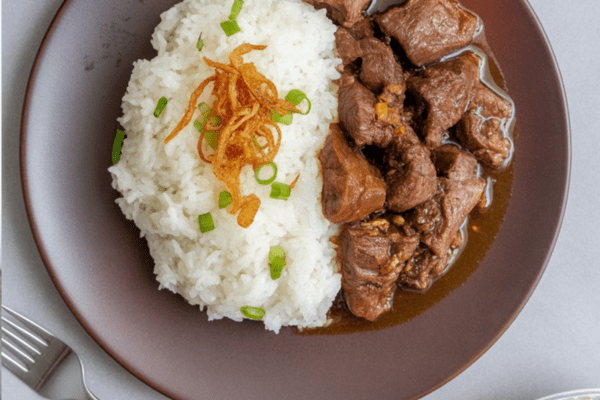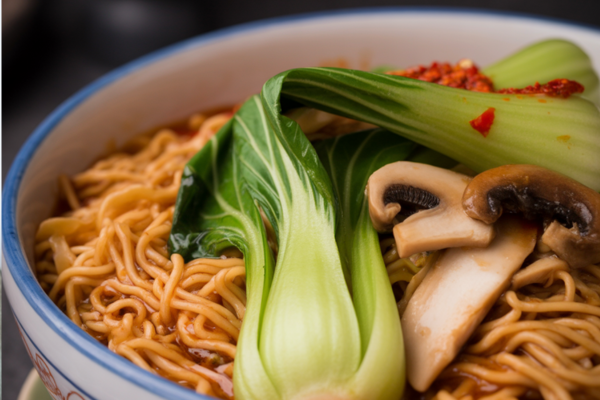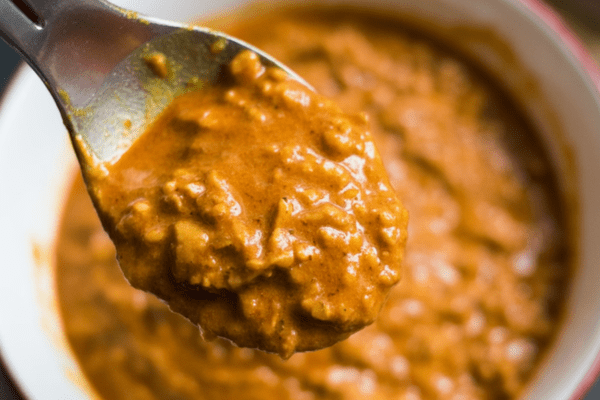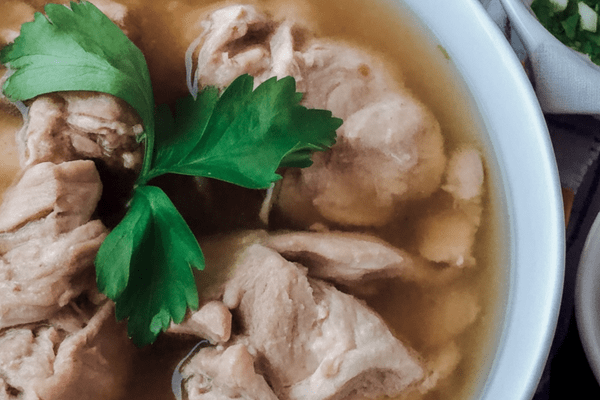I’ll be honest with you — I know liver is one of those polarizing ingredients. Some people love it, others won’t go near it. Personally? I’ve been a fan for as long as I can remember. It’s a comfort food that reminds me of simpler times, sharing dinner with family around the table, the pot of stew at the center, steaming rice ready to go.
Igado is one of my favorite ways to use liver because it turns what many see as a “strong” ingredient into something really balanced and savory. The pork tenderloin, peppers, green peas, and the tangy soy-vinegar sauce all come together in such a satisfying way.
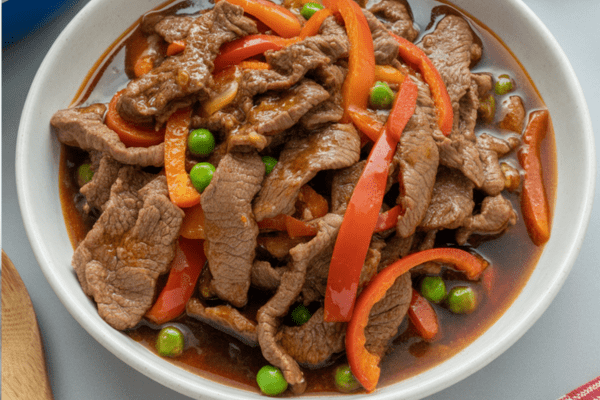
It’s also a budget-friendly meal that doesn’t skimp on nutrition. If you’re looking to stretch your grocery money without sacrificing taste, this dish deserves a spot in your weeknight rotation.
What Makes Igado Special
Igado is an Ilocano-style stew from northern Philippines, and it’s close to my heart because of its no-nonsense approach: take simple ingredients, cook them with care, and let the flavors shine.
It’s made with strips of pork tenderloin and liver simmered in a tangy, savory soy-vinegar sauce with garlic, onions, and bay leaves. A lot of families have their own versions — some toss in kidneys, hearts, or even carrots and potatoes for variety.
To me, it’s like the cousin of adobo, but with more body thanks to the liver. It’s not flashy, but it’s honest food — and I think that’s what makes it so good.
My Ingredients, My Way
When I make Igado at home, here’s what I usually reach for:
Pork Tenderloin
I like using lean pork tenderloin because it cooks quickly and stays tender. But if you’re after a richer flavor, don’t be afraid to swap in pork belly or Boston butt.
Pork Liver
I know liver isn’t for everyone, but it’s so nutritious. Vitamins A, D, E, and minerals like iron and copper make it a real powerhouse. Just slice it evenly so it cooks nicely with the other meat.
Bell Peppers and Green Peas
They add sweetness, color, and a little crunch that balances the richness.
Garlic and Onions
The foundation of so many Filipino dishes. I don’t skimp here — more garlic always works in my book.
Soy Sauce and Vinegar
These two are the heart of the sauce, giving that signature tangy-salty bite. I always let the vinegar boil uncovered first to mellow the sharpness.
Bay Leaves and Pepper
Bay leaves bring that subtle aroma, and freshly cracked black pepper is non-negotiable. It really lifts the whole dish.
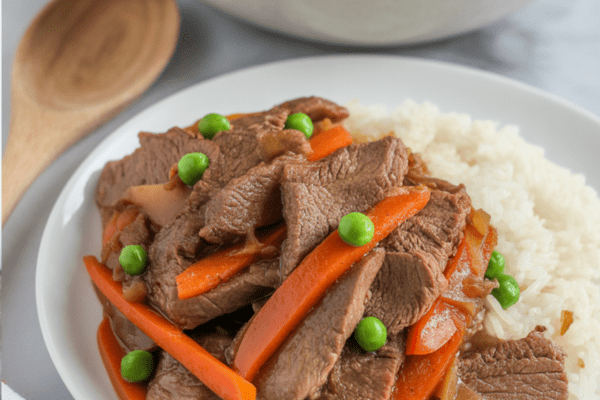
How I Cook Igado in My Kitchen
Whenever I make Igado, I try to keep it as simple and forgiving as possible. Here’s my no-fuss approach:
1. Prep is Everything
I make sure to cut the pork and liver into even strips. It really does make a difference — uneven pieces cook at different rates and you don’t want dry bits or underdone liver.
2. Browning the Pork
I heat a bit of oil in a pan and get the pork tenderloin browned on all sides. Don’t rush this step — those browned bits on the bottom are flavor gold.
3. Building the Sauce
Next goes in the garlic and onions. I sauté until they’re soft and fragrant, then I add soy sauce and vinegar. Here’s my tip: let that vinegar boil for a few minutes without covering or stirring. It really helps cook off the sharpness so you get a mellow tang rather than an acidic punch.
4. Simmer and Soften
I add water, bay leaves, and freshly cracked pepper. Then I cover and let it all simmer until the pork is nice and tender.
5. Adding the Liver
This is crucial: I always add the liver in the last few minutes of cooking. Liver cooks fast, and overcooking turns it tough and grainy. I aim for about 4 to 5 minutes so it stays tender but cooked through.
6. Finishing Touches
Lastly, I toss in the bell peppers and green peas. Just enough time to heat them through while keeping them vibrant and a little crisp.
My Best Tips for Getting It Right
I’ve made this dish countless times, and here’s what always helps:
- Pat the liver dry before slicing so it doesn’t release too much liquid and turn grainy.
- Be generous with black pepper — it really ties all the flavors together.
- Don’t stir the vinegar too soon; letting it boil undisturbed tones down the acid.
- Adjust soy and vinegar to taste. Some families like it tangier, others prefer it more savory. Taste as you go.
- Feeling adventurous? Add a chopped finger chili for subtle heat.

How I Love Serving Igado
Igado is the kind of dish that’s practically begging to be eaten with hot steamed rice. I ladle it right over rice so the sauce soaks in — the best part.
It’s also perfect for family-style meals. I put the pot on the table with a big serving spoon and let everyone help themselves.
On cooler nights, I sometimes add extra broth to make it a bit soupier, almost like a stew you can sip from a bowl with rice on the side.
Igado

Igado is one of those dishes that brings a sense of home with every bite. A classic Ilocano stew, it's a savory medley of pork, liver, and vegetables simmered in a tangy, umami-rich sauce.
Ingredients
- 1 small red bell pepper, sliced into thin strips
- ½ cup frozen green peas, thawed
- 1 tablespoon canola oil
- 4 cloves garlic, minced
- 1 onion, thinly sliced
- 1 pound pork tenderloin, cut into ½-inch strips
- 1 pound beef liver, cut into ½-inch strips
- ¼ cup soy sauce
- ½ cup vinegar
- ½ teaspoon cracked peppercorns
- 2 bay leaves
- 1 cup water
- Salt, to taste
Instructions
- Marinate the Pork - In a large bowl, toss the pork with vinegar, soy sauce, sliced onion, minced garlic, bay leaves, and peppercorns. Let it soak up the flavors for 15 to 20 minutes.
- Prepare the Veggies - Heat oil in a wide skillet over medium-high heat. Sauté the red bell pepper for about 30 seconds just until slightly softened. Remove and set aside.
- Sear the Pork - Drain the pork from the marinade, pressing out as much liquid as possible but keeping the marinade and aromatics for later. Add the pork to the same pan and cook until the meat is no longer pink.
- Build the Flavor - Stir in the reserved onion, garlic, bay leaves, and peppercorns. Continue to cook until the aromatics are fragrant and the pork begins to brown slightly.
- Simmer the Sauce - Pour in the reserved marinade and allow it to boil uncovered for 4 to 5 minutes—this step mellows the sharpness of the vinegar. Add the water, bring to a boil again, then reduce the heat. Cover and let it simmer for 25 to 30 minutes, or until the pork is fork-tender.
- Cook the Liver - Add the liver strips gently into the simmering stew. Let them cook for 4 to 5 minutes, just until they’re no longer pink and the sauce begins to thicken.
- Final Touches - Stir in the green peas and cook for another 2 to 3 minutes. Add the sautéed bell peppers and continue to simmer for a minute more—just enough to reheat everything without losing their color and texture.
- Season and Serve - Taste and add salt if needed. Serve hot over a mound of freshly steamed rice and enjoy this hearty Filipino comfort food.
Nutrition Information:
Yield: 4 Serving Size: 1Amount Per Serving: Calories: 468Total Fat: 14gSaturated Fat: 5gTrans Fat: 0gUnsaturated Fat: 8gCholesterol: 532mgSodium: 1180mgCarbohydrates: 15gFiber: 2gSugar: 4gProtein: 66g
Asianplated.com, occasionally offers nutritional information for recipes contained on this site. This information is provided as a courtesy and is an estimate only. This information comes from online calculators. Although allchickenrecipes.com attempts to provide accurate nutritional information, these figures are only estimates.
Storing and Reheating: It’s Even Better the Next Day
One of the best things about Igado is how well it keeps. The vinegar in the sauce actually helps it hold up beautifully for a few days.
Fridge: I store leftovers in an airtight container for up to 3 days. The flavors deepen overnight.
Reheating: A quick zap in the microwave works fine, but I usually reheat gently on the stovetop so the liver doesn’t get tough.
It’s one of those dishes I love to make ahead when I know I’ll be busy. There’s something comforting about knowing dinner’s already sorted.
If you’re new to liver or want to find a way to make it more appealing, Igado is a great place to start. It’s real, honest, home-cooked food that’s stood the test of time for good reason.
If you make it, I’d love to hear how it goes for you — and what little tweaks you make to make it yours.
Try other Filipino recipes:








